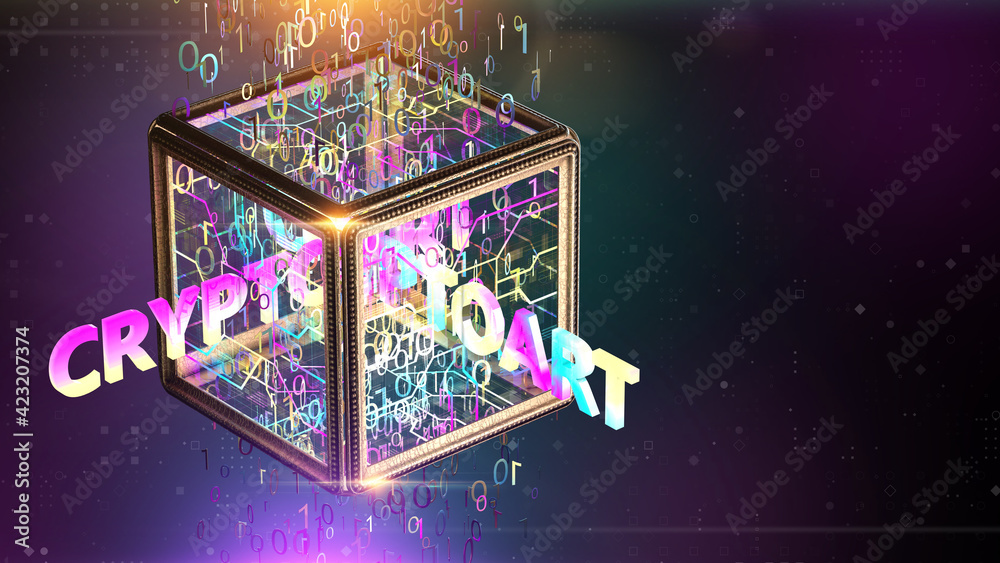Pixels to Profits: Unveiling the World of Crypto Art and Collectibles
Introduction:
In the digital age, where technology and creativity converge, a new form of art and collectibles is taking center stage – Crypto Art. This innovative space has been propelled by blockchain technology, offering artists and collectors a revolutionary platform for creation, ownership, and exchange. In this article, we’ll delve into the captivating world of crypto art and collectibles, exploring the marriage of artistry, technology, and finance that’s transforming the way we perceive and engage with artistic creations.
1. The Genesis of Crypto Art:
Crypto art, often referred to as “NFT art” (Non-Fungible Token art), is an artistic movement that leverages blockchain technology to represent ownership and provenance. Each piece of crypto art is tokenized, turning it into a unique digital asset, distinct from traditional art. The creation and validation of these tokens occur on blockchain platforms, like Ethereum, and are represented as NFTs.

2. NFTs and Digital Ownership:
NFTs serve as digital certificates of authenticity, verifying the uniqueness and ownership of a digital or physical item. This technology has opened up exciting opportunities for artists to gain more control over their work and its distribution. Collectors can now own digital assets securely and transparently.
3. The Crypto Art Boom:
Crypto art has seen an explosive growth in recent years. Artists, digital creators, and even traditional artists have joined the movement. A myriad of online marketplaces, such as OpenSea, Rarible, and SuperRare, have emerged, allowing artists to tokenize and sell their works directly to collectors.
4. The Role of Scarcity and Ownership:
The concept of scarcity is a driving force in the world of crypto art. As each NFT is unique, artists can limit the number of editions or copies of their digital creations. This scarcity often enhances the perceived value of the artwork.
5. Beyond Digital Paintings:
Crypto art extends beyond traditional paintings. It includes digital music, virtual real estate, video clips, 3D models, and even tweets. Anything that can be tokenized can become a part of this ever-expanding digital art universe.
6. Collectibles and Virtual Worlds:
Collectibles within virtual environments are gaining popularity. Games like Axie Infinity and Decentraland offer virtual real estate, in-game assets, and characters that can be bought, sold, and traded as NFTs.
7. The Environmental Debate:
The surge in crypto art has raised concerns about its environmental impact due to the energy-intensive nature of blockchain technology. Artists and platforms are exploring eco-friendly alternatives and solutions to mitigate this issue.
8. Legal and Copyright Considerations:
Navigating intellectual property rights and copyright in the world of crypto art is a complex endeavor. Artists and platforms are working to establish standards and frameworks for creators and collectors.
9. Notable Sales and Celebrities:
Crypto art has attracted the attention of celebrities and collectors worldwide. High-profile sales, like Beeple’s $69 million sale of “Everyday: The First 5000 Days,” have garnered significant media attention.
10. The Future of Crypto Art:
As the crypto art space continues to evolve, it’s expected to bridge the gap between physical and digital art, providing artists and collectors with new opportunities for creative expression and ownership.
Conclusion:
Crypto art and collectibles are revolutionizing the art world, offering a dynamic fusion of technology, creativity, and finance. This digital renaissance is changing how we value, buy, and sell artistic creations. Whether you’re an artist looking for a new canvas, a collector seeking unique digital treasures, or an observer intrigued by this artistic frontier, the world of crypto art and collectibles is a space to watch closely. It embodies the boundless possibilities that blockchain technology brings to art and ownership, reshaping the very essence of the art market as we know it.